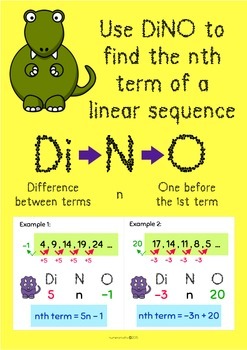

- Math sequences how to#
- Math sequences manual#
- Math sequences series#
Math sequences how to#
How to Find the Sum of Infinite Sequences?
Math sequences series#
What is the Difference Between a Sequence and a Series?Ī sequence is a collection of elements that are arranged according to a specific pattern whereas a series is the sum of a few or all elements of the sequence.
To obtain each successive term, keep multiplying the common ratio to its preceding term. Multiply the common ratio to the first term to obtain the second term. To obtain each successive term, keep adding the common difference to its preceding term.įollow the steps mentioned below to construct a geometric sequence. Add the common difference to the first term to obtain the second term. How to Construct an Arithmetic Sequence?įollow the steps mentioned below to construct an arithmetic sequence. Since every term is obtained by adding 13 to its previous term, it is an arithmetic sequence (which is also known as arithmetic progression). third term = 33 = 20 + 13 = second term + 13. second term = 20 = 7 + 13 = first term + 13. , does not represent any type of sequence but one can notice that it represents the cubes of odd natural numbers. Otherwise, one has to observe the numbers of the sequence to identify the pattern. If a sequence belongs to specific types like arithmetic, geometric, etc, then we have formulas to find the general term of the respective sequence. The general term (or) n th term defines a sequence. The following are the 4 important types of sequences: is a sequence as there is a pattern where each term is obtained by adding 4 to its previous term. The reciprocal of terms in harmonic sequence form an arithmetic sequence.įAQs on Sequences What is the Definition of Sequence?Ī sequence is an ordered list of elements with a specific pattern. In a geometric sequence, each successive term is obtained by multiplying the common ratio to its preceding term. In an arithmetic sequence, each successive term is obtained by adding the common difference to its preceding term. Thus, the missing number would be 5 2 + 5 3 = 25 + 125 = 150. It is very clear that the sequence does not belong to any of the sequences that we have mentioned in the previous section. Using that we can find the missing numbers.Įxample: Find the missing number of the sequence 2, 12, 36, 80, _. If the given sequence doesn't belong to any of the specific sequences mentioned above, then we have to observe the pattern of the sequence and define the general term. Sometimes, we don't need to find the general term also to find the missing terms. Moreover, the subscripts and superscripts could have been left off in the third, fourth, and fifth notations, if the indexing set was understood to be the natural numbers.Using the above rules/formulas of sequences, we can find the missing numbers of sequences. In mathematical analysis, a sequence is often denoted by letters in the form of a n 
The first element has index 0 or 1, depending on the context or a specific convention. The position of an element in a sequence is its rank or index it is the natural number for which the element is the image. Sequences can be finite, as in these examples, or infinite, such as the sequence of all even positive integers (2, 4, 6. Also, the sequence (1, 1, 2, 3, 5, 8), which contains the number 1 at two different positions, is a valid sequence.

The notion of a sequence can be generalized to an indexed family, defined as a function from an arbitrary index set.įor example, (M, A, R, Y) is a sequence of letters with the letter 'M' first and 'Y' last. Formally, a sequence can be defined as a function from natural numbers (the positions of elements in the sequence) to the elements at each position. Unlike a set, the same elements can appear multiple times at different positions in a sequence, and unlike a set, the order does matter. The number of elements (possibly infinite) is called the length of the sequence. Like a set, it contains members (also called elements, or terms). In mathematics, a sequence is an enumerated collection of objects in which repetitions are allowed and order matters. For other uses, see Sequence (disambiguation).
Math sequences manual#
For the manual transmission, see Sequential manual transmission.







 0 kommentar(er)
0 kommentar(er)
